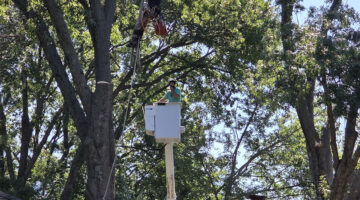What is a hazardous tree assessment?
A hazardous tree assessment is the process of evaluating trees that exhibit any signs or symptoms of structural defects that could cause damage or harm. These defects can include cracks, splits, decay, and diseases. A certified arborist is trained to assess trees, identify hazards, and recommend appropriate measures to mitigate the risks. The assessment can provide valuable information that homeowners, property managers, and municipalities can use to make informed decisions about tree removal or maintenance.
Why are hazardous tree assessments important?
Hazardous tree assessments are critical for ensuring public safety, reducing liability, and preserving trees when possible. Trees that have structural defects may fall or drop limbs, causing damage to property, vehicles, or people. Moreover, property owners or managers who fail to assess and take appropriate action on hazardous trees may face legal action if they cause harm to others. In addition, preserving trees where possible is essential from an environmental perspective, as trees provide ecological, social, and economic benefits.
What happens during a hazardous tree assessment?
During a hazardous tree assessment, the certified arborist will inspect the tree for signs of damage or decay that could indicate structural defects and assess the degree of hazard associated with the tree. The arborist will evaluate the tree's crown, trunk, and roots, and factor in the tree's location and surrounding environment. Once the assessment is complete, the arborist will provide a report that outlines any structural defects identified and recommendations for management.
What are the recommended management options?
Management options for hazardous trees depend on the degree of risk and the tree's condition. Trees that pose an immediate threat to people or property may need to be removed. However, if the threat is not imminent, the tree may be retained through pruning, cabling, or bracing. Pruning can remove any hazardous branches or limbs, while cabling or bracing can provide structural support to the tree. In some cases, these measures can prolong the tree's useful life and reduce the risks associated with it.
In conclusion, hazardous tree assessments are essential for maintaining public safety, reducing liability, and preserving our natural environment. If you suspect that a tree on your property is hazardous, it is crucial to contact a certified arborist to assess the tree's condition and provide recommendations. With proper assessment and management, we can continue to enjoy the many benefits that trees provide while keeping our communities safe.
















